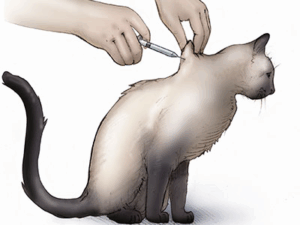In the US as well as Europe, altering (spaying or nurturing) is a common procedure for companion pets. More recently studies have been underway suggesting that altering earlier in life may have some consequences. This is a very highly debated subject in the world of veterinary medicine and pet owners may find themselves getting differing information.

This article will review the different perspectives and discuss some recent research – which is still ongoing – to try and provide the insight pet owners need to make an informed decision on the health of their pets.
When to Spay / Neuter?
When to alter your pet depends what side of the veterinary field you represent. Shelters and rescue groups advocate for young altering as their mission is to prevent overpopulation. Many puppies and kittens in shelters are altered by 10 weeks of age – before they have been adopted.
From a population control standpoint, this makes a lot of sense. there is a huge population of unwanted pets in the United States, which in turn leads to abandonment, neglect, shelter over-crowing and euthanasia.
When faced with the choice of altering early or adopting out and ‘hoping’ the new adoptive family alters their new pet, shelters often take the conservative approach and with understandable reason.
Population Control or Health benefits?

That said, if we are not approaching it from the population control aspect, then there are benefits to waiting until pets are a little more mature. Smaller sized patients lose body heat faster and can have serious decreases in body temperature when they are younger and therefore smaller.
Storing of blood glucose in less mature livers can also lead to low blood sugar when fasted and under anesthesia which can have serious consequences. So in an ideal world, cats and dogs would be altered at a later age. When depends of the species and breed.
Cats and Small Breed Dogs
In cats, typically 5-6 months of age is appropriate. female cats may start ovulating as early as 4-5 months. Male cats may begin marking behavior around 6 months of age. Currently, no risks other than what is listed above are noted in altering at the 5-6 month mark in feline patients.
Small or toy breed dogs can also be altered around 6-months of age without negative consequences with two notable exceptions: the Boston Terrier and the Shih Tzu. Newer studies show that in 35
larger dog breeds, there are benefits to waiting past 6 months of age and in some larger breeds, sometimes over a year.
Larger Breed Dogs

Debilitating side effects of early alerting include joint disorders such as hip and elbow dysplasia along with ligament tears like cranial cruciate tears and ruptures. In some dog breeds studies, cancer was associated with altering earlier than 6-months of age.
These breeds include the Golden Retriever, Standard Poodles and Rottweilers among others. Cancers that were increased by earlier altering included lymphoma, hemangiosarcoma and osteosarcoma. The highest percentage of these cancers were found in larger dogs altered at under 6 months of age.
Again, for the smaller breed dogs, only the two breeds mentioned above had increased cancer risks. And no small breed dog showed issues with musculoskeletal abnormalities or ligament issues.
Work with Your Veterinarian
Outside of the shelter or rescue group setting, most pet owners can elect at what age they want to spay or neuter their pet. Talking to their veterinarian can help with that decision. But a guideline for 35 studied breeds at risk has been compiled to help pet owners make sound decisions.
It is important to consider that these studies are newer and still ongoing. It is possible that more or differing information may emerge as this issue is further researched. It’s also important to keep in mind that some dogs, based on individual personality and lifestyle, may need to be altered sooner then the suggested guidelines.
For instance a multi-dog household with males and females places the risk of unwanted litters. In an environment where the males and females cannot be separated, altering may be an important consideration.
Some intact male dogs can also show some dominant, aggressive or territorial behavior at an early age. For dogs like this, training and an earlier castration may be beneficial. Also for dogs that are housed outside, intact males may try to jump fences or dig under them if they smell a female dog in heat.
There are many things to consider when making the decision of what is the right time. Currently, there are some guidelines on sex, breed and the best age to alter dogs. While these guidelines are evolving, consultation with your veterinarian about the most appropriate age for your pet is advisable.



